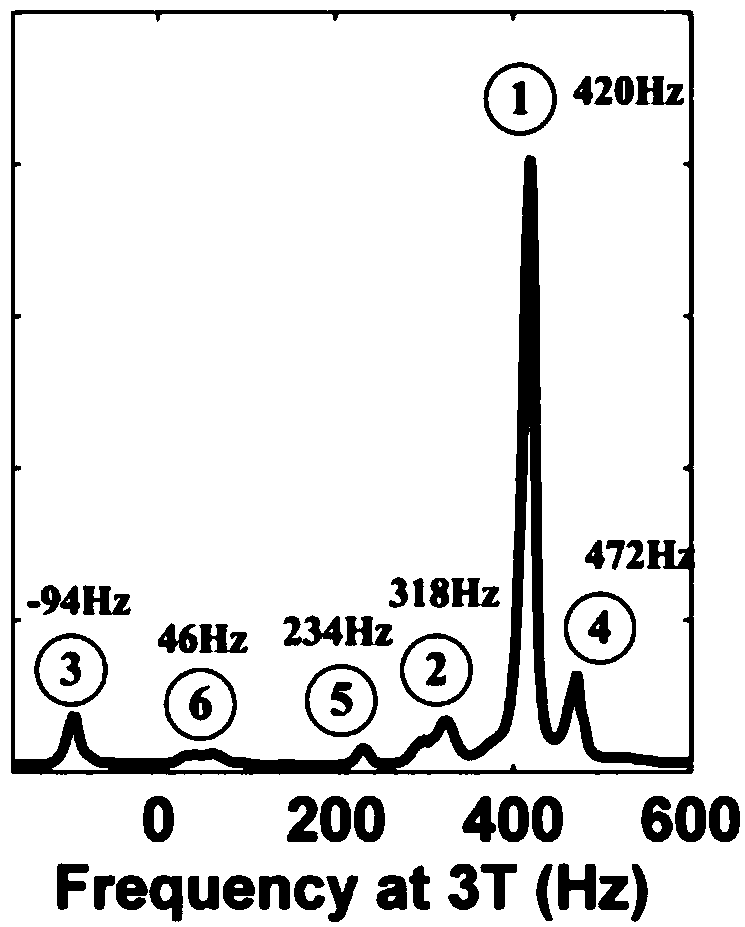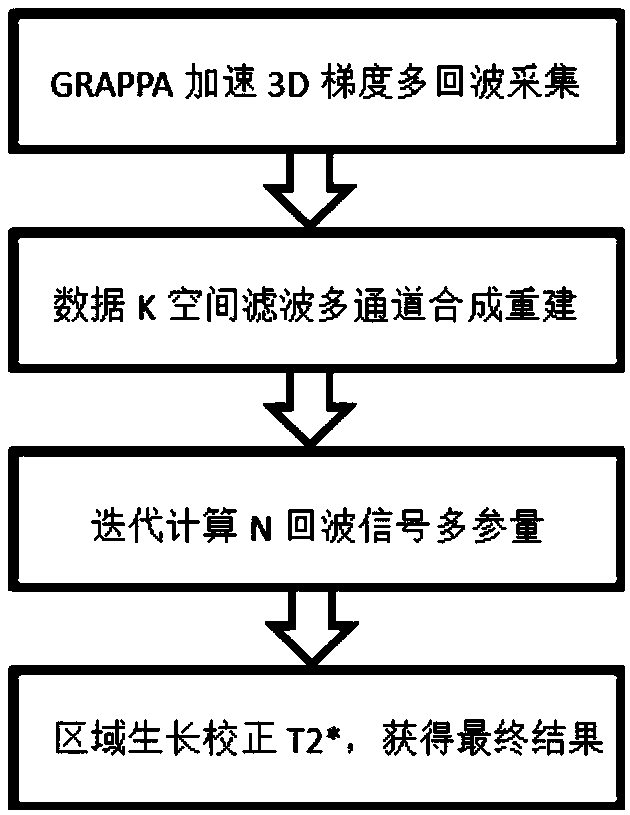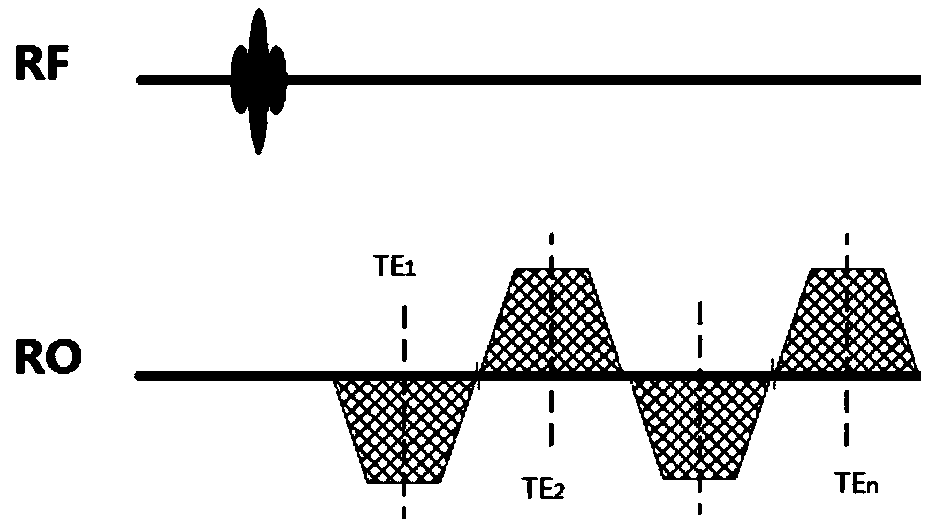Gradient-echo multi-echo water and fat separation method and magnetic resonance imaging system using method
A magnetic resonance imaging, water-fat separation technology, applied in applications, medical science, sensors, etc., can solve the problems of water-fat separation quantitative analysis accuracy discount, increase data acquisition time, affect signal attenuation correction, etc., to reduce motion artifacts and high SAR value effects, improved accuracy and stability, high applicability and versatility
- Summary
- Abstract
- Description
- Claims
- Application Information
AI Technical Summary
Problems solved by technology
Method used
Image
Examples
Embodiment
[0031] Embodiment: Below in conjunction with accompanying drawing, this gradient echo multi-echo water-fat separation method provided by the present invention is specifically described as follows:
[0032] Such as figure 1Shown is a known multi-peak water-fat model diagram measured on the 3.0TMRI system, showing the chemical shift frequency difference of the most important fat component (that is, peak No. 1 in the figure, the most important fat molecule) relative to water It is 420Hz, if it is about 210Hz on the 1.5TMRI system, because the water-fat chemical shift frequency difference of the 1.5TMRI system is exactly half of that on the 3.0TMRI system. The relative position of each fat peak in the water-fat multimodal model is the same, so this figure is used to illustrate the concept of the water-fat multimodal model. This figure is only an example of the fat peak signal of a fat sample. If other samples are scanned, the peak area ratio of each fat peak will be different to ...
PUM
 Login to View More
Login to View More Abstract
Description
Claims
Application Information
 Login to View More
Login to View More - Generate Ideas
- Intellectual Property
- Life Sciences
- Materials
- Tech Scout
- Unparalleled Data Quality
- Higher Quality Content
- 60% Fewer Hallucinations
Browse by: Latest US Patents, China's latest patents, Technical Efficacy Thesaurus, Application Domain, Technology Topic, Popular Technical Reports.
© 2025 PatSnap. All rights reserved.Legal|Privacy policy|Modern Slavery Act Transparency Statement|Sitemap|About US| Contact US: help@patsnap.com



